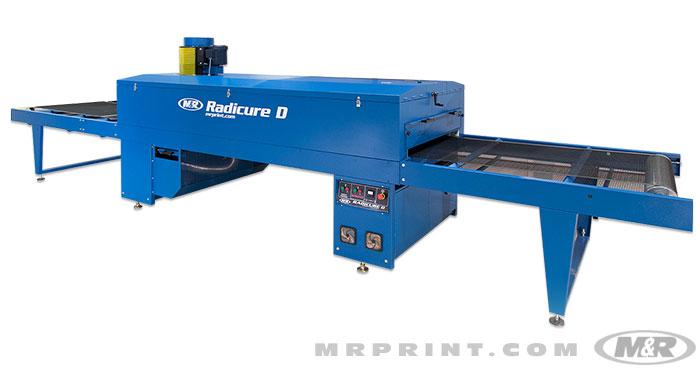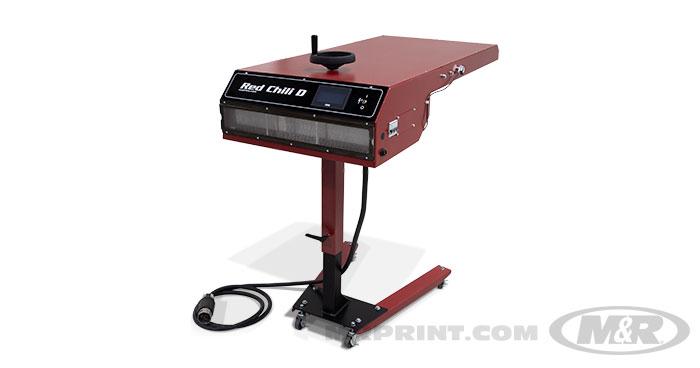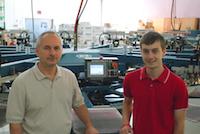You also need to generate work that takes advantage of the strengths of an automatic press. As the average number of shirts in each job increases, so does the value of an automatic press. Fortunately, a new generation of low-cost entry-level screen printing presses has dramatically reduced the amount and type of work needed to justify an automatic. An M&R representative can provide additional information.
The Facility: Prior to any purchase, make sure your facility can support the equipment. Is there a way to get the equipment into the building? Is there adequate space? Are there pillars or other obstructions? Is there adequate electrical power? If you plan on a gas dryer, is natural gas or liquid propane available? You'll also need a darkroom where you can coat, dry, and store screens.
Equipment: Once you have satisfactory answers to those questions, it's time to look at specific products. It should go without saying that you'll have the greatest success and fewest problems if you stick with screen printing equipment from an established company with a reputation for customer service and quality products. If you can get most of your equipment from one company, you'll usually eliminate compatibility issues, and you'll benefit by getting nearly all your service and support at the same place.
The best screen printing equipment is easy to use, machined to precise tolerances, easy to integrate with your other equipment—and durable.
The Press: The most important item is the screen printing press. Get more color capacity than you think you need. There aren't many screen printers who think their presses have too much capacity, and the added cost of two extra printheads is small compared to the cost of replacing the press—or of work lost because of limited color capacity. We recommend at least 8 colors for most operations. Entry-level automatics are extremely inexpensive, and are adequate for many small startups. More expensive screen printing presses may offer faster print speed, higher output, larger print area, and greater versatility.
You should also consider a manual press for sampling and short runs. A sampling press allows your automatic to spend more time in high-speed production. If you already have a manual press operation, and are fortunate enough to have a manual press that works with automatic screen frames, you're already set. If you don't, the frames that work on your manual press cannot be carried to the automatic, making it much less efficient as a sample press.
Pre-registration Systems: Most screen printers who have used pre-registration systems wouldn't print any other way. That's because they maintain registration as the images move from artwork to screens to the press. And they have a fast return on investment because they require less screen printing expertise, reduce setup time up to 95%, and help ensure high-quality prints.
Screen Exposure Systems: Buy the best system your budget will allow. A number of steps go into the screen printing process, and none are more important than producing a high-quality screen. There is simply no way to get a good print from a bad screen because the press simply cannot hold detail that is not present in the screen. The screen is where it all starts, so buy the best screen exposure system your budget will allow.
Instant-start metal halide units produce exposures with the fine detail needed for high-quality printing, and a unit sized for pre-registration systems can dramatically increase productivity. LED screen exposure units are a recent development, and the best units are also designed to hold fine detail for high-quality output. LED units, made with hundreds or thousands of tiny LED lights, have the advantages of longevity, reduced heat output, and lower electricity costs.
Digital Screen Imaging and LED Digital Imaging/Exposure Systems: Digital screen imaging systems enable screen printers to use digital files to print images on emulsion-coated screens. Digital images are easy to store, easy to retrieve, and easy to use. And for the ultimate in screen imaging, consider a digital screen imaging and exposure system. These systems create images during the screen's inward pass and expose those screens on the outward pass. Not only are they faster than conventional imaging and exposure processes, they take up less room.
Flash Cures: An instant-on quartz flash cure unit that reverts to standby mode when the unit is idle is the ideal choice. More sophisticated models can be controlled by a programmable interface, by sensor, or by manual switch. Some flash cure units have independently-controlled zones that can reduce energy consumption when curing small images.
Dryers: Gas conveyor dryers are less expensive to operate in most areas where natural gas or propane is available. However, electric dryers are just as effective at curing, so they are a good choice in areas where electric operating costs are similar to natural gas. However, relative energy costs aren't the only consideration. Energy-efficient screen printing dryers cost less to run because less heat escapes into the workplace. Energy-efficient dryers also reduce cooling costs and increase employee comfort in areas prone to high temperatures and high humidity.
Miscellaneous Equipment: Other mandatory items include a powerful air compressor with a large tank and an air chiller to remove moisture. You also need high-quality screen frames. Although retensionable screen frames represent a significant initial expense, they are the most durable, versatile, and cost-efficient choice.
Although this just begins to tell you what you need to know when getting started in an automatic press operation, there are many resources on the Web, including www.sgia.org and www.screenweb.com.






